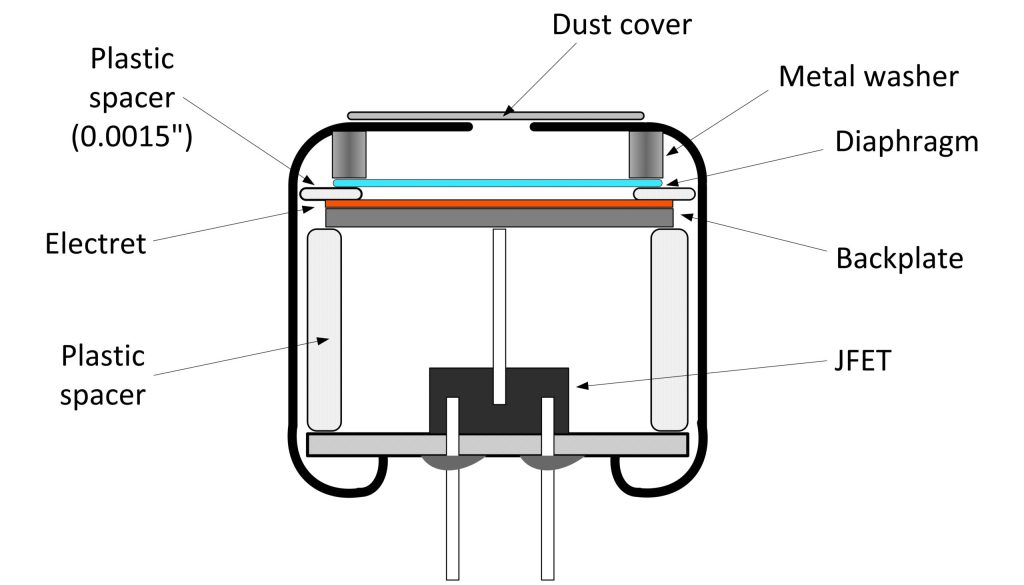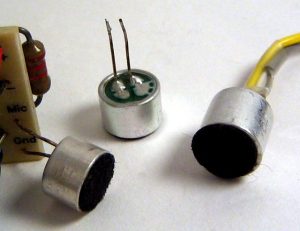The 7 types of microphones
Although each microphone uses a diaphragm to capture movements in the atmosphere, the method used to convert that movement into electrical currents varies. The following sections explore the seven methods.
Older or vintage microphone types encompass a variety of technologies and designs that have played a crucial role in the history of audio recording. Each type has its own characteristics, applications, and sonic qualities. Here are some common types of vintage microphones:
-
Carbon Microphones: These were among the earliest types of microphones. Carbon microphones used carbon granules to modulate an electrical current in response to sound waves. They were widely used in early telephony and broadcasting.
- Dynamic Microphones: Dynamic microphones use a diaphragm attached to a coil of wire placed within the magnetic field of a magnet. When sound waves hit the diaphragm, it moves the coil, generating an electrical current. Dynamic microphones are durable and versatile, commonly used for live sound and recording.
- Condenser Microphones: Condenser microphones use a diaphragm placed very close to a backplate. The diaphragm and backplate form a capacitor, and when sound waves hit the diaphragm, it induces changes in capacitance, generating an electrical signal. Condenser microphones are known for their sensitivity and ability to capture a wide frequency range.
-
Ribbon Microphones: Ribbon microphones feature a thin strip of metal (the ribbon) placed between the poles of a magnet. When sound waves hit the ribbon, it vibrates, inducing an electrical current. Ribbon microphones are known for their smooth and natural sound, and many vintage models remain highly sought after.
- Crystal Microphones: Crystal microphones use a piezoelectric crystal to generate electrical signals in response to mechanical vibrations. While not as common today, crystal microphones were widely used in early communications and broadcasting.
- Tube (Valve) Microphones: Many vintage microphones, especially condenser microphones, incorporated vacuum tubes (valves) in their circuitry. Tube microphones are known for their warm and characterful sound, and they were widely used in recording studios during the mid-20th century.
- Electret Microphones: Although the technology dates back to the 1920s, electret microphones became more prevalent in the latter half of the 20th century. They use a permanently charged material as the diaphragm, eliminating the need for an external power source. Electret microphones are compact and commonly used in a variety of applications.
Understanding the characteristics of these vintage microphone types is crucial for selecting the right microphone for specific recording scenarios. Each type has its strengths and weaknesses, and the choice depends on factors such as the type of sound source, the recording environment, and the desired tonal characteristics. Vintage microphones from these different types continue to be valued for their unique sonic qualities and historical significance.
CARBON
Carbon microphones operate on the following concept: When carbon granules are compressed, their resistance decreases.
Carbon microphones are not commonly used in the modern world, but were used in telephony and broadcast in the early days of the technology up until the late 70s. A battery is required to create an electric current to flow through the carbon granules. As sound interacts with the carbon, the granules are compressed. This changes the resistance of the carbon, in turn increasing and decreasing the current with the movements of the air. Carbon microphones suffer from significant noise and limited frequency response.
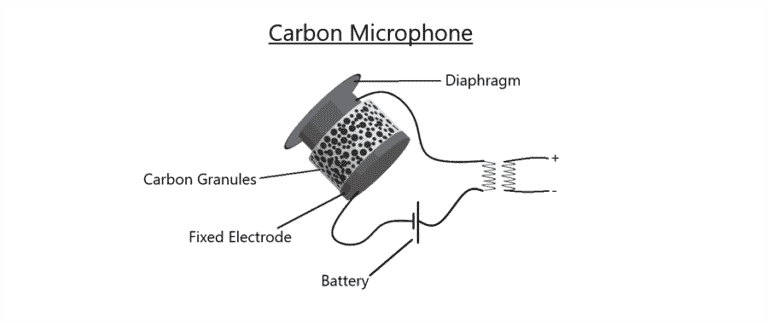
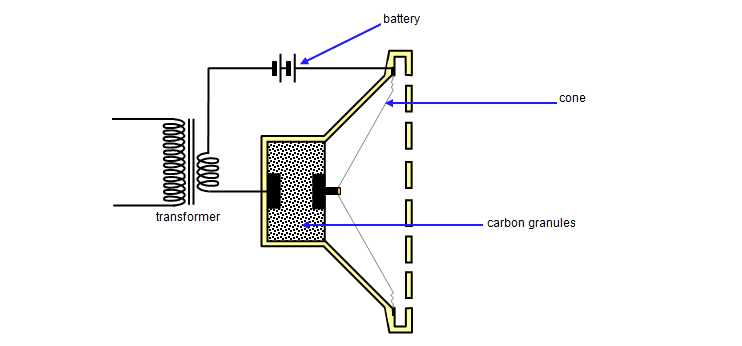
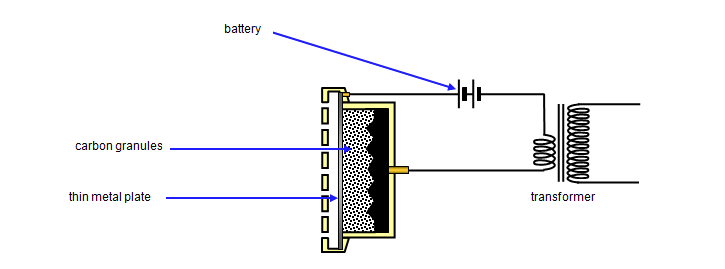
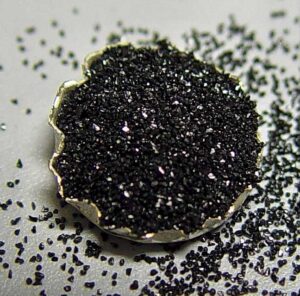
DYNAMIC
Dynamic microphones are also called moving coil microphones. They function on the following principle: as a coil of wire moves in relation to a magnet, a voltage is created on the wire.
In a dynamic microphone, the diaphragm is attached to a coil of wire. The coil of wire surrounds a magnet.
The diaphragm is usually made of aluminum alloy or other low-mass material, so that it can be moved by the low-mass particles of the air.
As the diaphragm shifts forward and backward with the movements in the atmosphere, the coil of wire also moves. Because the coil surrounds around a stationary magnet, as the coil moves around the magnet, a voltage is created on the wire. Take a look at the model below.
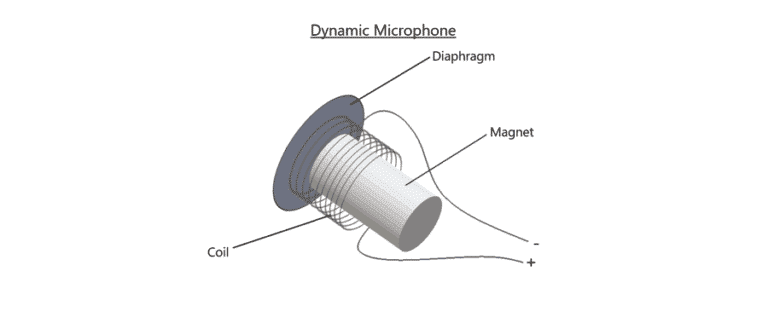
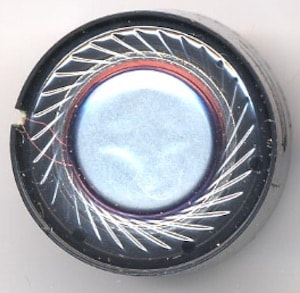
CONDENSER
Condenser microphones are also called capacitor microphones. They function on the following principle: If two metal plates are in close proximity, the closer they are, the higher the capacitance.
Capacitance is the ability of a system to hold an electrical charge.
In a condenser microphone, an electrically conductive diaphragm, usually made of gold-sputtered mylar, is suspended in close proximity to a solid metal plate. When sound waves interact with the diaphragm, it moves back and forth relative to the solid metal plate. This change in distance from the backplate to the diaphragm creates a change in capacitance, and an electrical signal is created.
An impedance conversion circuit must be placed after the output of the capacitor to make the signal usable in an audio system. This circuitry requires +48V-DC, known as phantom power.
In some applications, such as cell phones and computers, electret condenser microphones are used which utilize permanently charged material and do not require phantom power. You can see a simplified diagram of a condenser microphone below.

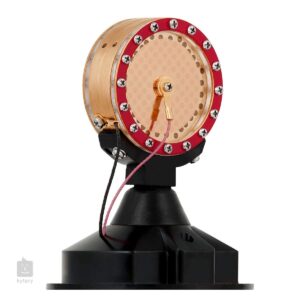
RIBBON
Ribbon microphones are also called velocity microphones, and are technically a variation of a dynamic microphone. The function on the following principle: as an electrically conductive ribbon moves within the field of a magnet, a voltage is created on the ribbon.
In a ribbon microphone, a corrugated ribbon is suspended in the field of a permanent magnet. The ribbon is typically made of low-mass, aluminum alloy. When sound interacts with the suspended ribbon, the ribbon moves in relation to the magnet. This creates a voltage on the ribbon, which is connected to the output of the microphone.
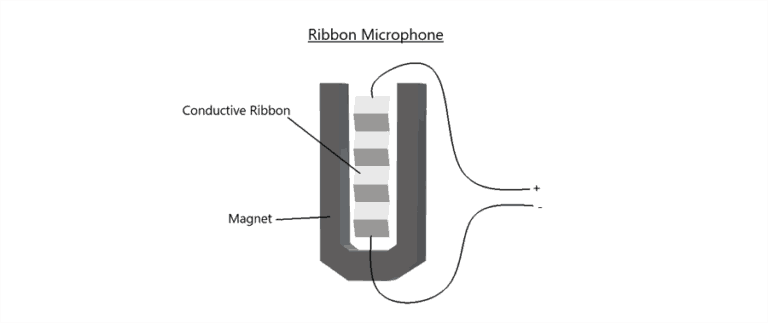
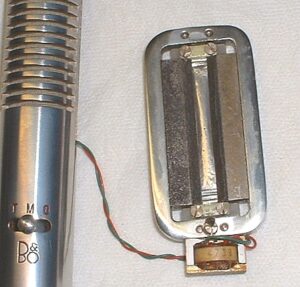
CRYSTAL
Crystal microphones are also called piezoelectric microphones. They function on the following principle: When certain crystals are placed under mechanical force, a voltage is produced.
This is called the piezoelectric effect. As sound places pressure to diaphragm or to a crystal directly, the crystal is flexed. This flexion creates an electrical charge on the crystal, which represents the vibrations in the air. Crystal microphones are also not widely used today. They do not offer wide frequency response and operate at a high impedance not suitable for professional applications.
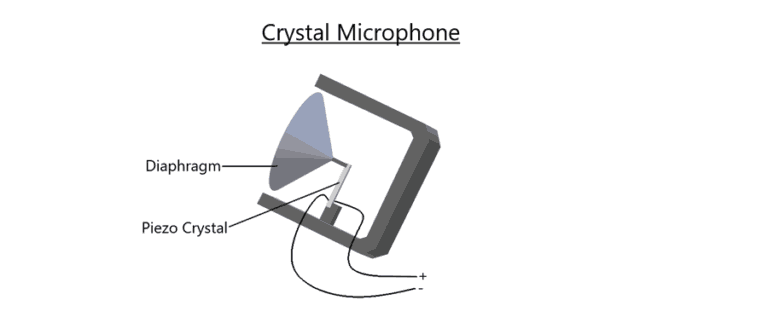
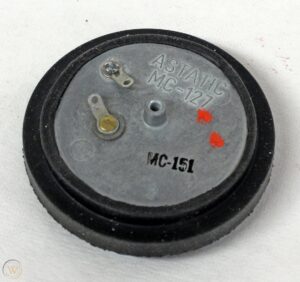
TUBE OR VALVE
A tube microphone, also known as a valve microphone, is a type of microphone that incorporates a vacuum tube (valve) in its electronic circuitry. The vacuum tube serves as an amplifier in the microphone’s signal path. Tube microphones were prevalent during the mid-20th century, especially in the 1950s and 1960s, and they are often associated with the “vintage” sound that many audio enthusiasts appreciate.
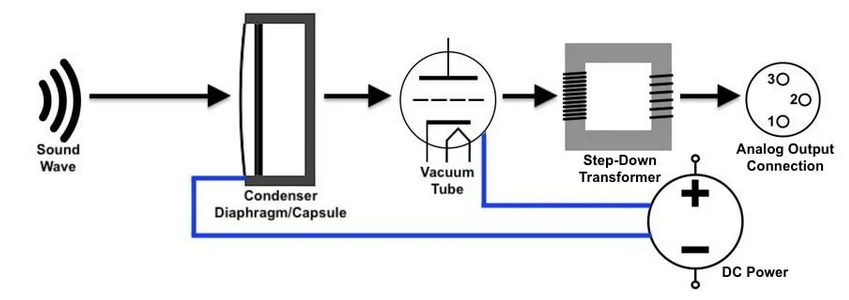
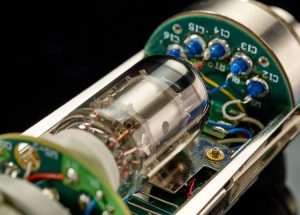
ELECTRET
An electret microphone is a type of condenser microphone that uses an electret material as the diaphragm’s transducer element. The term “electret” is a portmanteau of “electric” and “magnet,” highlighting the material’s ability to maintain a permanent electric charge. Electret microphones are popular due to their compact size, low cost, and ability to operate with minimal power requirements.
